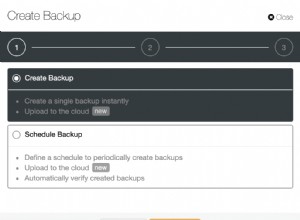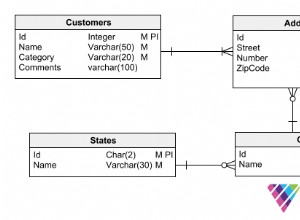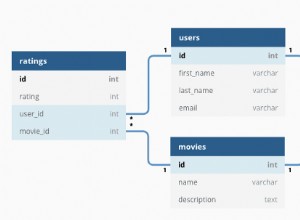Una variazione dell'approccio @boneists, a partire dai dati di esempio in un CTE:
with t as (
select 1 id, 'A' name, '2007' year, '04' month, 5 sales from dual union all
select 2 id, 'A' name, '2007' year, '05' month, 2 sales from dual union all
select 3 id, 'B' name, '2008' year, '12' month, 3 sales from dual union all
select 4 id, 'B' name, '2009' year, '12' month, 56 sales from dual union all
select 5 id, 'C' name, '2009' year, '08' month, 89 sales from dual union all
select 13 id,'B' name, '2016' year, '01' month, 10 sales from dual union all
select 14 id,'A' name, '2016' year, '02' month, 8 sales from dual union all
select 15 id,'D' name, '2016' year, '03' month, 12 sales from dual union all
select 16 id,'E' name, '2016' year, '04' month, 34 sales from dual
),
y (year, rnk) as (
select year, dense_rank() over (order by year)
from (select distinct year from t)
),
r (name, year, month, sales, rnk) as (
select t.name, t.year, t.month, t.sales, y.rnk
from t
join y on y.year = t.year
union all
select r.name, y.year, r.month, 0, y.rnk
from y
join r on r.rnk = y.rnk - 1
where not exists (
select 1 from t where t.year = y.year and t.month = r.month and t.name = r.name
)
)
select name, year, month, sales,
nvl(sum(sales) over (partition by name order by year, month
rows between unbounded preceding and 1 preceding), 0) as opening_bal,
nvl(sum(sales) over (partition by name order by year, month
rows between unbounded preceding and current row), 0) as closing_bal
from r
order by year, month, name;
Che ottiene anche lo stesso risultato, sebbene non corrisponda ai risultati attesi nella domanda:
NAME YEAR MONTH SALES OPENING_BAL CLOSING_BAL
---- ---- ----- ---------- ----------- -----------
A 2007 04 5 0 5
A 2007 05 2 5 7
A 2008 04 0 7 7
A 2008 05 0 7 7
B 2008 12 3 0 3
A 2009 04 0 7 7
A 2009 05 0 7 7
C 2009 08 89 0 89
B 2009 12 56 3 59
B 2016 01 10 59 69
A 2016 02 8 7 15
D 2016 03 12 0 12
A 2016 04 0 15 15
E 2016 04 34 0 34
A 2016 05 0 15 15
C 2016 08 0 89 89
B 2016 12 0 69 69
Il y CTE (sentiti libero di usare nomi più significativi!) Genera tutti gli anni distinti dai tuoi dati originali e aggiunge anche una classifica, quindi 2007 è 1, 2008 è 2, 2009 è 3 e 2016 è 4.
Il r CTE ricorsivo combina i tuoi dati effettivi con righe fittizie con zero vendite, in base ai dati nome/mese degli anni precedenti.
Da ciò che produce quel CTE ricorsivo puoi fare la tua somma cumulativa analitica per aggiungere i saldi di apertura/chiusura. Questo utilizza le clausole di finestra per decidere quali valori di vendita includere:essenzialmente i saldi di apertura e chiusura sono la somma di tutti i valori fino a questo punto, ma l'apertura non include la riga corrente.




